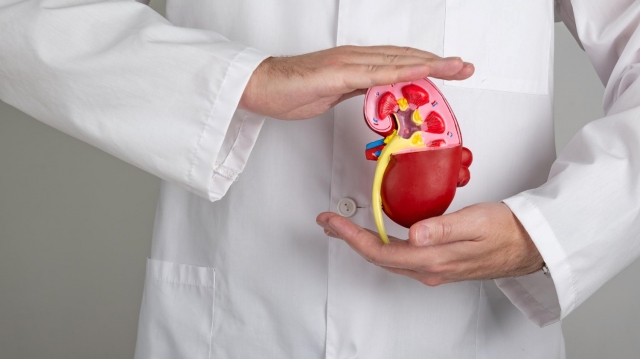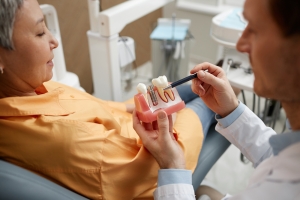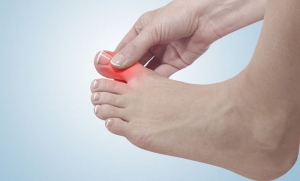Kidney disease refers to a condition where the kidneys are damaged and cannot filter blood the way they should. This damage can lead to the buildup of waste products and fluid in the body, causing a variety of health problems. There are two main types of kidney disease: acute kidney injury and chronic kidney disease (CKD).
Acute Kidney Injury (AKI)
Acute kidney injury is a sudden episode of kidney failure or damage that happens within a few hours or days. It causes waste products to build up in the blood and makes it hard for the kidneys to keep the right balance of fluid in the body. AKI can be fatal and requires immediate treatment.
Chronic Kidney Disease (CKD)
Chronic kidney disease is a long-term condition where the kidneys do not work effectively over a period of time. CKD can progress to end-stage kidney disease (ESKD), where the kidneys completely fail. When this happens, patients need dialysis or a kidney transplant to stay alive.
Symptoms of Kidney Disease
Kidney disease (read more on: https://ribboncheckup.com/pages/kidney-disease) is often called a "silent disease" because it usually doesn't cause symptoms until it reaches an advanced stage. However, some common signs and symptoms include:
- Fatigue
- Swelling in the ankles, feet, or hands
- Shortness of breath
- Nausea and vomiting
- Confusion and difficulty concentrating
- Loss of appetite
- Changes in urine output
Causes and Risk Factors
There are several causes and risk factors for kidney disease, including:
- Diabetes: High blood sugar levels can damage the blood vessels in the kidneys.
- High blood pressure: Hypertension can cause damage to the kidney's blood vessels.
- Glomerulonephritis: An inflammation of the kidney's filtering units.
- Polycystic kidney disease: A genetic disorder that causes cysts to form in the kidneys.
- Urinary tract infections: Repeated infections can lead to kidney damage.
- Use of certain medications: Long-term use of NSAIDs, some antibiotics, and other drugs can harm the kidneys.
Diagnosing Kidney Disease
Diagnosing kidney disease involves a combination of blood tests, urine tests, and imaging studies. Common tests include:
- Blood tests: These measure levels of waste products like creatinine and urea.
- Urine tests: These check for abnormalities such as protein or blood in the urine.
- Imaging tests: Ultrasound, CT scans, and MRIs provide pictures of the kidneys.
- Kidney biopsy: A small sample of kidney tissue is examined under a microscope.
Is it Possible to Test for Kidney Disease at Home?
Home Testing Kits
Yes, it is possible to test for kidney disease at home using various home testing kits. These kits typically measure levels of certain substances in the urine, such as albumin or creatinine, which can indicate kidney damage. Some of the popular home testing options include:
- Urine dipstick tests: These simple tests can detect protein, blood, and other abnormalities in the urine.
- Mail-in test kits: These kits allow you to collect a urine sample at home and send it to a lab for analysis.
How to Use Home Testing Kits
Using home testing kits is generally straightforward:
- Read the instructions: Each kit will come with specific instructions that should be followed carefully.
- Collect a urine sample: Use the provided container to collect a midstream urine sample.
- Perform the test: Follow the steps to test the urine sample, which usually involves dipping a test strip into the urine.
- Interpret the results: Compare the color changes on the test strip to the provided chart to determine if there are any abnormalities.
Advantages and Limitations
Home testing kits offer several advantages, such as convenience, privacy, and early detection. However, they also have limitations:
- Accuracy: Home tests may not be as accurate as laboratory tests.
- Interpretation: It may be difficult to interpret the results correctly without medical training.
- Follow-up: Abnormal results should always be followed up with a healthcare professional for further testing and diagnosis.
Preventing Kidney Disease
Preventing kidney disease involves maintaining a healthy lifestyle and managing underlying health conditions. Key steps include:
- Control blood sugar levels: If you have diabetes, keep your blood sugar levels under control.
- Manage blood pressure: Maintain a healthy blood pressure through diet, exercise, and medication if necessary.
- Healthy diet: Eat a balanced diet low in salt, fat, and sugar.
- Stay hydrated: Drink plenty of water to help your kidneys function properly.
- Avoid smoking: Smoking can damage blood vessels and reduce blood flow to the kidneys.
- Regular check-ups: Get regular health check-ups to monitor kidney function, especially if you have risk factors for kidney disease.
Treatment Options for Kidney Disease
Treatment for kidney disease depends on the underlying cause and the stage of the disease. Common treatments include:
- Medications: To control blood pressure, manage blood sugar levels, and reduce cholesterol.
- Dietary changes: To reduce the workload on the kidneys.
- Dialysis: For advanced kidney disease, dialysis can help remove waste products from the blood.
- Kidney transplant: In severe cases, a kidney transplant may be necessary.
Living with Kidney Disease
Living with kidney disease requires ongoing management and lifestyle adjustments. Patients should work closely with their healthcare team to monitor their condition and make necessary changes to their diet, medication, and daily activities.
Support and Resources
There are many resources available for individuals living with kidney disease, including support groups, educational materials, and online communities. These resources can provide valuable information and emotional support for patients and their families.






